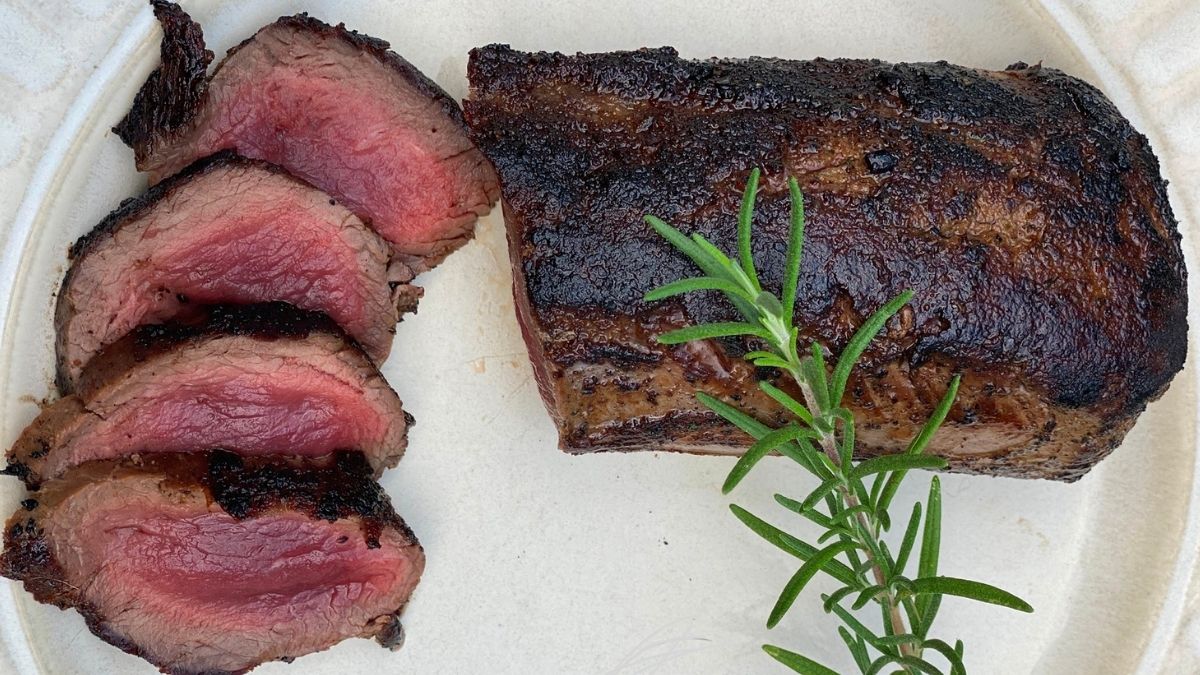
By Jonathan Bowman
Photos by Jonathan Bowman
I would be willing to bet that venison is probably the most mishandled wild game. I have zero research to back this up, just a sneaking suspicion and lot of bad information I’ve heard around the fire or read on hunting forums.
“But my grandpa always said…” Your grandpa might be right, and I’m sure he taught you a lot of great things about venison, but if it could be better, wouldn’t you want to change up your methodology a little bit?
I don’t claim to have cooking venison all figured out, I just know I have cooked some amazing backstraps (think deer steak) and some terrible ones.
Here are my observations:
- If you have the luxury of cold weather (below 40 as a general rule) or a generous friend with a walk-in cooler, field dress (remove guts and organs) your deer and hang it skin-on for four to seven days. It is amazing how much this improves the quality of the meat. Butchers do this with farmed animals, so why wouldn’t we do it with deer? Even when I don’t feel like processing the deer myself, I still hang it before taking it to the meat processor (keep in mind the butcher may hang it for a day or two as well). Keith Mast of K&S Meats in Kenbridge shared with me his #1 piece of advice to any hunters bringing a deer to the meat processor. “Field dress the deer as quickly as possible, especially if the animal was shot in the guts.” If you are new to field dressing, there are an abundance of YouTube how-to videos, and the entire process will probably only take you five to 10 minutes after you have done it a few times.
- Read Danielle Prewitt’s guide to “wet aging” meat. All you need is a vacuum sealer. In short, vacuum seal your tenderloins or backstrap for 7-21 days. (I’ve done 28, but I felt it started to degrade in texture). My wife hardly ever ate any kind of deer steak before I started wet aging, and now she loves the steaks. While I hate the term “gamey,” wet aging is the most significant reducer of the overly strong flavor deer sometimes have. Don’t forget to change the bag every five to seven days so that it’s not sitting in blood for too long as this also reduces texture quality.
- Cook that baby rare or medium rare! I’m sorry, but venison steaks are not nearly as good when cooked medium and beyond. I live in Amelia, so I understand I am speaking heresy in some households, but give it a try. Rare/medium rare is not uncooked, just cooked for optimal flavor and tenderness. A key part of these steaks being excellent are points 1 and 2 above. If you can’t do rare/medium rare, you can make incredible jerky from the steaks.
- You can use every part of a deer, but don’t let the high and mighty on the Internet make you feel like a heathen just because you are nervous to eat the heart, for example. The heart is amazing, and one of the best parts of the deer (very much like steak), but if you are new to hunting and that intimidates you, just ask on a local Facebook group if anyone in the area would like the heart from your deer. There’s nothing wrong with that, but I strongly encourage you to try it!
- Keep the shoulders! Shoulders and rear hams make incredible roasts, jerky, chili corned venison, and more. They are also fantastic for simple crock pot recipes that require minimal effort.
At the end of the day, my goal is that hunters and their families will enjoy deer even more than they have in the past. Cook deer how you like it, but don’t be afraid to try some new techniques and recipes. If you do try any of the recipes below, please let me know how it went!
Here are a few crowd-pleasing recipes I keep in my regular rotation:
Perfect Venison Backstrap or Tenderloin
Get the recipeI won’t claim that this recipe is original. It is, like most recipes, a compilation of many different recipes I have tested over the years. This is my favorite. You will probably like to make it your own with a slight variation, and I encourage you to do so!
Sika Deer Carpaccio Recipe — Elevated Wild
Wade Truong is a fellow contributor to the Virginia Department of Wildlife Resources (DWR), and his recipes are some of my favorites. If you ask my family and friends, Venison Carpaccio was the dish that really knocked people’s socks off last year. You can easily substitute the ingredients, just make sure to follow the process for getting the meat to look and feel like carpaccio.
Corned Venison Recipe – How to Make Corned Venison | Hank Shaw (honest-food.net)
I make five or six pounds of this recipe each year. It’s that good. It’s extremely easy to do, and hard to mess up. It will require some fridge space for a week. Hank Shaw is a former Fredericksburg resident turned “Wild Game Cooking Legend.” I’m not sure if that’s his official title, but I own all of his books and I have made probably 30-40 of his dishes. I’ve yet to try a Hank Shaw recipe that I didn’t love.
Jonathan Bowman lives in Amelia County, where he spends as much time as possible hunting, fishing, and cooking. Joanthan loves sharing his passions with others, and is determined to one day convince his wife to join him on a turkey hunt.


